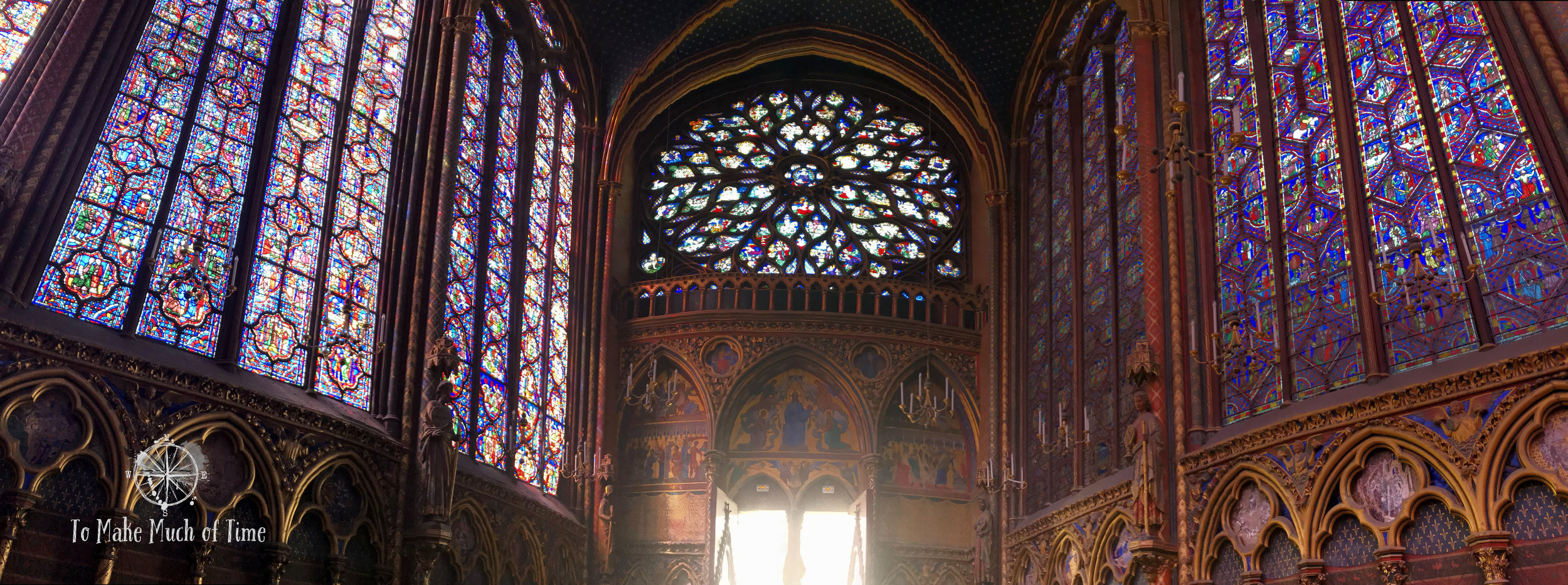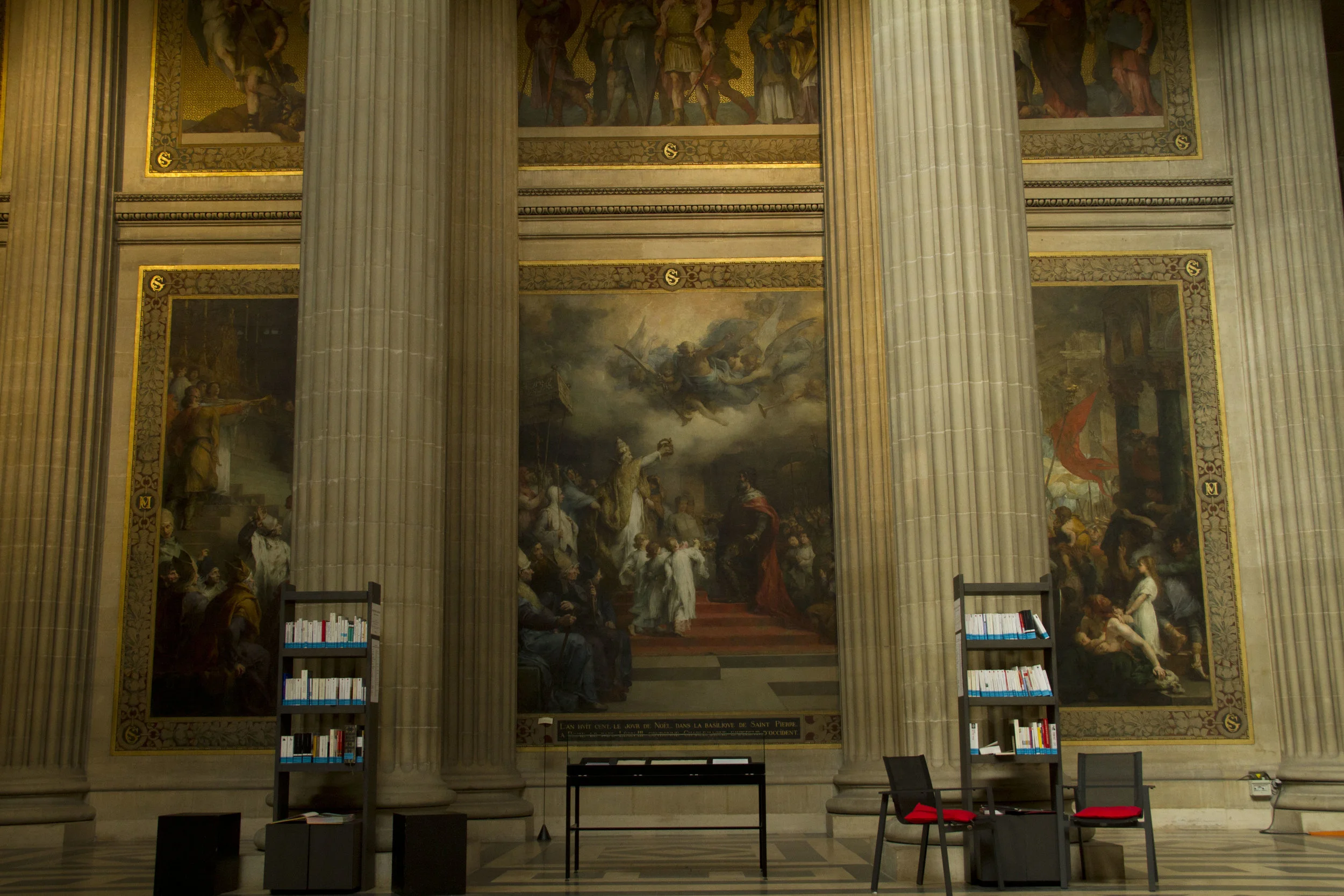Off the Beaten Path in Paris: 6 Amazing Destinations
With a fraction of the crowds and stained glass second to none, Sainte-Chapelle is an absolutely gorgeous gem and is right down the street from Notre-Dame.
UPDATED: 2/5/2023
Note: Some links throughout our site are affiliate links, which means we may receive a small commission at no cost to you.
Paris is a popular destination with a long list of spots on most travelers’ must-see lists from the Eiffel Tower to the Louvre. If you’re looking to go a little off the beaten path and see some great but less well known spots, which are also usually less crowded, these are some places that may be of interest to you. From a unique art museum to underground early Paris city ruins to the northernmost Roman ruins and more, find a spot in Paris of interest to you!
We will split these destinations up with two on the Right Bank, two on the Left Bank, and two on Île de la Cité so no matter where you are exploring, one of these is nearby!
With a room designed for the exact curvature of the paintings, Musée de l'Orangerie takes displaying and viewing artwork to a new level.
off the beaten path in paris: the right bank
Musée de l'Orangerie - home to not only some of the largest but also the most interestingly presented paintings we have seen.
L’Orangerie is made up of two oval, connected rooms housing a total of eight (four per room) of Monet’s waterlily paintings in massive form. If you are putting two-and-two together and realizing an oval room would have no flat walls on which to hang paintings, you are correct! Monet planned these paintings to purposefully fit into these oval rooms so that visitors can immerse themselves in the waterlily world and the two rooms (when viewed from above) would be situated in the symbol for infinity (∞). Who wouldn’t want to spend an infinity in this serene water world? With seating in the middle of each room, the museum even makes it comfortable to take it all in.
ding on how long you like to spend with art, Musée de l'Orangerie can be quite a quick visit (even 5-10 minutes). The building is small and primarily houses the two rooms with a basement space for additional exhibits. This museum is basically the anti-Louvre in experience and is situated at the other end of the Tuileries Garden from the Louvre so visiting them on the same day makes sense.
Finding Jim Morrison’s grave was as easy as following the stream of fans.
off the beaten path in paris: the left bank
Explore an array of historical artwork and walk through an ancient Roman bath at Musée de Cluny (Museum of the Middle Ages).
Musée de Cluny (Museum of the Middle Ages) - What brought us to this museum and was very worthy of our visit in-and-of-itself was an interest in seeing the Lady and the Unicorn tapestries and other relics from the Middle Ages. While that may or may not be of interest to you, what really makes this museum special is the frigidarium. In the semi-basement of the museum are the remains of a Roman bath! Built around the 1st century and in operation until the 3rd century, these are thought to be the largest ancient remains in Northern Europe today, and we found the space to be quite well preserved. As if in a cathedral, the vaulted ceiling soared about 45 feet high.
Also housed in the frigidarium is a notable work of history. The Pillar of the Boatmen, carved out of limestone in around the year 25 AD, is thought to be the oldest monument in Paris and one of the earliest Gallo-Roman works of art to include inscriptions. Featuring Roman gods and Latin inscriptions, the belief that they were stacked into pillars is not confirmed and no one is sure exactly how they were structured. At some point, the pillars, which represented a guild of sailors in the city, were moved from their original home to a spot to reinforce walls on Île de la Cité where they were rediscovered in the early 1700s during work on Notre Dame. We spent about an hour in total during our visit to both the core museum and frigidarium. For more on this museum, read our blog about it here.
Every inch of the Pantheon of Paris is decorated with incredible detail.
- Pantheon - This beautiful example of Neoclassical architecture is a treasure trove and started off life as a cathedral. In its current life, the Pantheon serves as a secular state mausoleum. The main floor is filled with mosaics, paintings, sculptures, a mini library, and more. At the back of the building, you can descend the spiral staircase to the maze-like crypt to view the final resting places of some of France's notable people. The layout and architecture of the crypt is also fascinating. During our visit (in April), there were hardly any other visitors to the Pantheon. We spent about an hour here, which was a good amount of time to explore without being rushed. For more information on the Pantheon, check out our blog here.
off the beaten path in paris: Île de la Cité
- Sainte-Chapelle - King Louis IX had this Gothic-style royal chapel built in 1242. Comprised of a lower level chapel (for palace staff) and upper level chapel (for the king and his close family and advisors), what makes this chapel worth visiting is its epic stained glass. With over 1100 pieces of stained glass windows stretching 45-feet high in the air, you will find yourself dwarfed as you take it all in. As is typically the case with stained glass, the panes tell various religious stories from the Book of Genesis through Christ's Resurrection. An additional interesting element is the blue hue created by the windows that wash the interior in colored light. Read more about Sainte-Chapelle on our blog here.
Hidden within the courtyard of the current Palais du Justice, Sainte Chapelle is a must-see for those who enjoy historic churches.
Located below the courtyard in front of Notre-Dame, the Crypt Archeologique houses many relics of Paris history.
- Crypte archéologique - Tucked underground on the other end of the plaza in front of Notre-Dame, this crypt is the ruins of the early Parisian city center. Discovered during excavations, you can view the actual ruins that helps bring to life how crowded early Paris was and how little city planning existed but then evolved over time. During the excavation, coins and other trinkets were discovered and help paint a picture of the extensive trade routes at the time. These are on display in the museum along with helpful graphics that bring the ruins to life. You can read more about this spot on our blog here.
Click the image below to save this post to Pinterest!
Check out our other posts about France:
Have time for more?
We love sharing our journey. More Paris right here!













